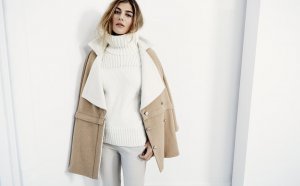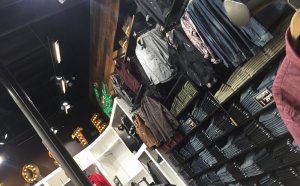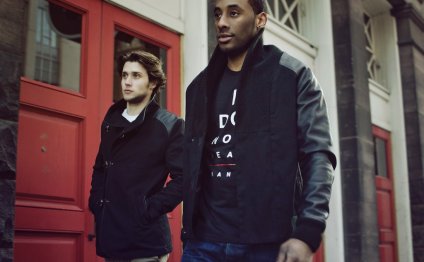
Trend Theory Clothing
Fashion requires change, novelty, in addition to framework period, destination, and wearer. Blumer (1969) describes manner influence as a procedure of "collective selection" whereby the synthesis of flavor derives from several folks responding collectively into the zeitgeist or "character of times." The multiple introduction and display of numerous brand-new types, the choices produced by the innovative customer, and the idea of the phrase associated with the spirit of this times provide impetus for style. Central to any definition of fashion could be the commitment between your designed product and just how it is distributed and consumed.
Fashion Systems Model
The research of manner in twentieth century is framed with regards to a style systems design with a distinct center where innovations and adjustments radiate outward (Davis 1992). Manufacturers work through the premise of one appearance, one picture for many, with rules about hem lengths and what to use with what. In this model, the fashion-consuming public develops from a cutting-edge central core, surrounded by receptive rings of fashion consumers radiating outward from center.
In this system innovation can are derived from a select grouping of manufacturers, including Christian Dior just who introduced the "fresh look" in 1947. Influential facets ranges from specific tastes, to current activities, to advertising and marketing and product sales offers. The best qualifier of the fashion methods model may be the range of influence, urging, even demanding, one choose all. The part of conformity is instrumental.
Populist Model
An alternate model towards manner systems model is the "populist" design. This model is characterized as polycentric, where groups based on variations old, socioeconomic status, location, and culture develop their very own manner. Such teams might add teens in a specific school or older persons in a retirement neighborhood. Polhemus (1994) defines "styletribes" as a definite cultural section that creates a unique form of gown and decoration. Such "styletribes" may develop their own appearances from combining present garments, producing their very own customized colors by tie-dyeing or painting, mixing and matching from previously worn and recycled clothes for sale in thrift shops and classic areas. They may not be therefore focused on one style of dressing just like articulating themselves, though there was an element of conformity that derives from processes used and also the resulting personal behavior. Polhemus reflects that such "styletribes" have actually flourished at "precisely that point in history when individuality and personal freedom attended to be noticed because the determining attributes of our age" (p.14).
The Flow of Fashion
The circulation of manner is called an action, a flow, or trickle from one section of culture to a different. The diffusion of impacts from center to periphery is conceived of in hierarchical or perhaps in horizontal terms, for instance the trickle-down, trickle-across, or trickle-up concepts.
Trickle Down
The earliest theory of distribution could be the trickle-down principle described by Veblen in 1899. To function, this trickle-down action is determined by a hierarchical society and a striving for ascending mobility among the different personal strata. Within design, a mode is very first provided and used by people towards the top strata of community and gradually becomes acknowledged by those reduced the strata (Veblen; Simmel; Laver). This circulation model assumes a social hierarchy which people seek to determine using affluent and people at the top request both difference and, eventually, distance from those socially below them. Fashion is considered a vehicle of conspicuous usage and ascending transportation for everyone wanting to copy varieties of dress. When the fashion is followed by those beneath, the affluent reject appear for the next.
Trickle Across
Proponents for the trickle-across concept declare that manner techniques horizontally between groups on similar social amounts (King; Robinson). Into the trickle-across model, there clearly was small lag time taken between adoption in one team to some other. Evidence for this principle takes place when developers reveal a look at the same time at prices including the high-end to lessen end ready-to-wear. Robinson (1958) aids the trickle-across concept as he states that any social team took its cue from contiguous groups into the personal stratum. King (1963) cited reasons behind this pattern of distribution, like rapid size communications, advertising attempts of manufacturers and merchants, and visibility of a look to any or all manner frontrunners.
Trickle Up
The trickle-up or bubble-up design may be the newest of style action ideas. Inside concept the development is set up from the street, as we say, and followed from lower income teams. The development sooner or later flows to upper-income teams; hence the activity is through the base up.
Samples of the trickle-up principle of fashion circulation include an extremely early proponent, Chanel, which thought manner a few ideas descends from the streets after which had been adopted by couture manufacturers. A number of the a few ideas she pursued had been inspired by the woman perception associated with the needs of women for functional and comfortable gown. After World War II the younger discovered Army/Navy excess shops and begun to wear pea coats and khaki jeans. Another group of clothing, the T-shirt, initially worn by laborers as a functional and practical undergarment, has since been adopted universally as an informal external garment and a note board.
Thus how a trendy look permeates confirmed culture depends upon its origins, just what it appears to be like, the extent of their influence, while the motivations of the following the design. The foundation of the appearance may originate in the upper degrees of a society, and/or street, but aside from source, manner needs a forward thinking, fresh look.
Product Development
A look will be the outcome of innovations in products of gown, the direction they are positioned collectively, and/or kind of behavior elicited because of the types of dressing. A fashionable appearance involves the type of clothes from the body and its own prospect of definition (DeLong 1998). Indicating can derive from the product, but definition also can develop from means of using the product, or through the human body itself (Entwistle 2000). Fashionable gown symbolizes modern aesthetic and understanding understood to be desirable at certain moment.
Lehmann (2000) defines fashion as a random creation that dies as an innovation comes into the world. He views fashion as contradictory, both defining the old and contemporary by randomly quoting from last also representing the present. Robinson (1958) defines manner as following novelty because of its very own benefit. Lipovetsky (1994) promises that deciding facets popular will be the pursuit of novelty and the excitement of aesthetic play, while Roche (1994) describes style as dynamic modification.
Though fashion indicates continuous modification, specific products have persisted over-long durations, such as for example blue jeans, which were made a basic of dressing in the usa in the twentieth century. Though blue jeans are a recognizable kind, you have the potential for great variety in item details, including stone washing, dyeing, painting, tearing, and fraying. Blue jeans epitomize the growth of informal fashion and endure since they can change to resonate using times.
RELATED VIDEO
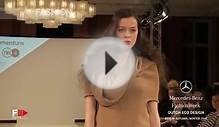

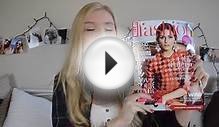
Share this Post
Related posts
Winter Style
WinterStyle.com specializes in premium quality winter months outerwear accessories. Discover the seasons hottest winter months…
Read MoreTrends Theory Clothing
I look for trend analysis really fascinating. I m obsessed with the idea that we now have patterns to trends, as well as…
Read More
